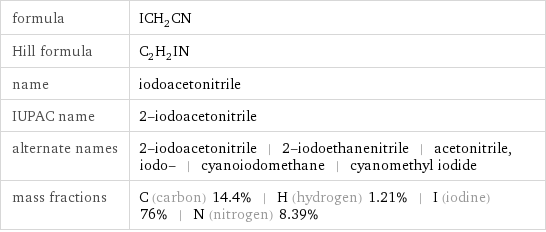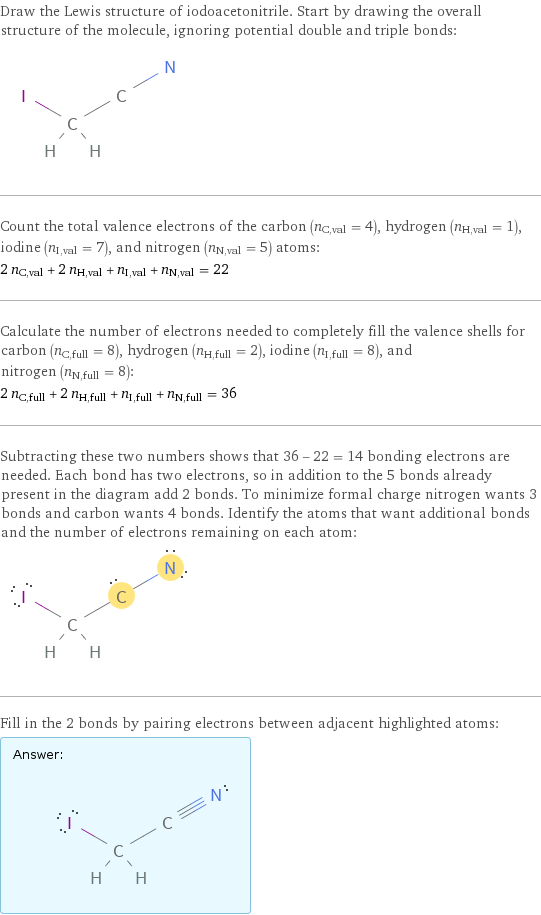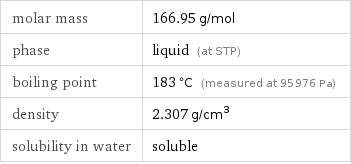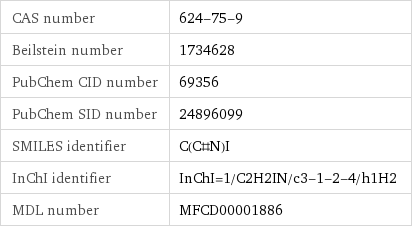Input interpretation

iodoacetonitrile
Chemical names and formulas

formula | ICH_2CN Hill formula | C_2H_2IN name | iodoacetonitrile IUPAC name | 2-iodoacetonitrile alternate names | 2-iodoacetonitrile | 2-iodoethanenitrile | acetonitrile, iodo- | cyanoiodomethane | cyanomethyl iodide mass fractions | C (carbon) 14.4% | H (hydrogen) 1.21% | I (iodine) 76% | N (nitrogen) 8.39%
Lewis structure

Draw the Lewis structure of iodoacetonitrile. Start by drawing the overall structure of the molecule, ignoring potential double and triple bonds: Count the total valence electrons of the carbon (n_C, val = 4), hydrogen (n_H, val = 1), iodine (n_I, val = 7), and nitrogen (n_N, val = 5) atoms: 2 n_C, val + 2 n_H, val + n_I, val + n_N, val = 22 Calculate the number of electrons needed to completely fill the valence shells for carbon (n_C, full = 8), hydrogen (n_H, full = 2), iodine (n_I, full = 8), and nitrogen (n_N, full = 8): 2 n_C, full + 2 n_H, full + n_I, full + n_N, full = 36 Subtracting these two numbers shows that 36 - 22 = 14 bonding electrons are needed. Each bond has two electrons, so in addition to the 5 bonds already present in the diagram add 2 bonds. To minimize formal charge nitrogen wants 3 bonds and carbon wants 4 bonds. Identify the atoms that want additional bonds and the number of electrons remaining on each atom: Fill in the 2 bonds by pairing electrons between adjacent highlighted atoms: Answer: | |
3D structure

3D structure
Basic properties

molar mass | 166.95 g/mol phase | liquid (at STP) boiling point | 183 °C (measured at 95976 Pa) density | 2.307 g/cm^3 solubility in water | soluble
Units

Liquid properties (at STP)

density | 2.307 g/cm^3 refractive index | 1.574
Units

Chemical identifiers

CAS number | 624-75-9 Beilstein number | 1734628 PubChem CID number | 69356 PubChem SID number | 24896099 SMILES identifier | C(C#N)I InChI identifier | InChI=1/C2H2IN/c3-1-2-4/h1H2 MDL number | MFCD00001886
Safety properties

flash point | 86.11 °C

DOT hazard class | 6.1 DOT numbers | 3276